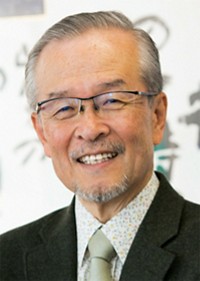Advertisement
Grab your lab coat. Let's get started
Welcome!
Welcome!
Create an account below to get 6 C&EN articles per month, receive newsletters and more - all free.
It seems this is your first time logging in online. Please enter the following information to continue.
As an ACS member you automatically get access to this site. All we need is few more details to create your reading experience.
Not you? Sign in with a different account.
Not you? Sign in with a different account.
ERROR 1
ERROR 1
ERROR 2
ERROR 2
ERROR 2
ERROR 2
ERROR 2
Password and Confirm password must match.
If you have an ACS member number, please enter it here so we can link this account to your membership. (optional)
ERROR 2
ACS values your privacy. By submitting your information, you are gaining access to C&EN and subscribing to our weekly newsletter. We use the information you provide to make your reading experience better, and we will never sell your data to third party members.
Synthesis
Arthur C. Cope Scholar Awards
by LINDA RABER
February 25, 2008
| A version of this story appeared in
Volume 86, Issue 8
"While teaching a graduate course on organometallic chemistry from an organic chemist's perspective, I found myself consistently mentioning that the groundbreaking work had come from the laboratory of Tamio Hayashi," says Stephen L. Buchwald, Camille Dreyfus Professor of Chemistry at Massachusetts Institute of Technology. "In my mind, he is one of the true greats in the area of catalytic asymmetric synthesis."
Harvard University's Eric N. Jacobsen agrees. He points out that a career in methods development can be considered a "terrific success if it involves discovery of even one new ligand class or a new synthetic transformation with broad utility, or identification of a new design concept that influences all subsequent work in the field. Tamio Hayashi has made a stunning number of such discoveries."
Hayashi, 60, is professor of chemistry in the Graduate School of Science at Kyoto University, in Japan. His long list of important contributions goes all the way back to his postdoctoral training, when he pioneered the development of cross-coupling reactions. In his early independent work at Kyoto University, he discovered the now famous dppf (bis-diphenylphosphinoferrocene) ligand and applied it to cross-coupling reactions. "The enforced large bite angle of this ligand is the key to its special properties, and this has proven to be a crucially useful concept in organometallic chemistry," Jacobsen explains.
The ferrocene template proved to be fertile ground for Hayashi, leading him to the development of chiral ferrocenylphosphine ligands for the first enantioselective cross-coupling reactions. Jacobsen notes that "one of the greatest discoveries in the history of asymmetric catalysis ensued with Hayashi's development of bifunctional gold(ferrocenylphosphine) complexes for enantioselective aldol reactions." This seminal study helped lay the foundation for numerous important programs in cooperative chiral catalysis, including Jacobsen's.
Hayashi made another defining discovery in asymmetric catalysis with the development of the MOP ligand. This was the first monodentate chiral phosphine ligand that displayed high enantioselectivity with broad substrate scope. He illustrated its utility in a dramatic way in the enantioselective hydrosilylation of terminal olefins, achieving high enantiomeric excesses and regioselectivities with substrates as simple as 1-octene. This reaction remains the most enantioselective of any known transformation of terminal olefins. More important, perhaps, the MOP ligand has served as a useful ligand or lead structure for ligand development in countless other catalytic reactions developed by others.
According to Jacobsen, another of Hayashi's great contributions in terms of new asymmetric catalytic reactions is his discovery of the Rh(binap)-catalyzed conjugate addition of boronic acid derivatives. Following up on a discovery of the racemic pathway by Miyaura, Hayashi made a major breakthrough in the discovery of a highly enantioselective variant using the venerable binap ligand. "This solved one of the most important and long-standing problems in the field, with a general and broadly useful method for C-C bond construction through 1,4-addition of hard nucleophiles," Jacobsen says.
Hayashi's subsequent mechanistic studies on this process revealed the direct participation of rhodium hydroxide intermediates and opened the door to the use of milder and more functional group-tolerant conditions. The Hayashi conjugate addition reaction is now one of the most widely used asymmetric catalytic methods in synthetic chemistry.
Hayashi received bachelor's (1970), master's (1972), and Ph.D. (1975) degrees at Kyoto University. He was a postdoctoral fellow at Colorado State University (1976-77). He has received numerous awards, including the Society of Synthetic Organic Chemistry, Japan, Award for Young Scientists; the IBM Japan Prize; and the Chemical Society of Japan Award. He has also participated in many distinguished lectureships internationally.






Join the conversation
Contact the reporter
Submit a Letter to the Editor for publication
Engage with us on Twitter